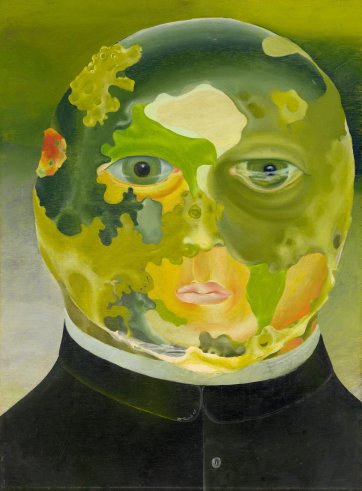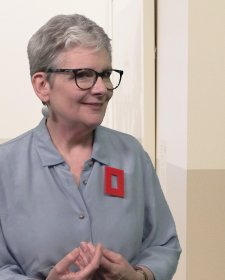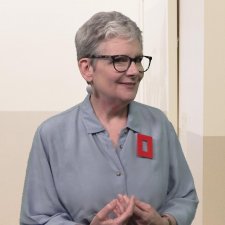The two portraits that I'm gonna talk about today are Hari Ho's 2005 portrait of Dadang Christanto, and Dusan Marek's 1965 Scientific Priest.


- So the two portraits that I'm gonna talk about today are two of my favourites in the exhibition. I think they're fantastic, not only for their sort of visual similarities, but also the kind of narrative behind the two sitters works. So the first one is Hari Ho's 2005 portrait of Dadang Christanto. And the second one is Dusan Marek's 1965 "Scientific priest". Dadang Christanto, he is an Indonesian man of Chinese descent and he moved over here to Australia kind of later in life but he had to survive through the whole Indonesian genocide of the 19, of 1965 to '66. And it sort of plays on this sort of concept of the fact that during the Indonesian genocide, they'd often sort of chuck bodies into bodies of water and every now and then you'd walk past either the beach or a lake and you'd just see kind of body parts sticking up from places, which is really quite a horrific image but it's obviously one that's stayed with him because when Harry ho asked to take his portrait, he said, "where'd you wanna take it?" And Christanto immediately went, "the beach". So they went down to the beach and apparently the story of this particular portrait is that they were at the beach. They decided they were gonna dig a hole that was deep enough for Christanto to sit in. And so he is sitting there covered in sand and ha hope pours a bucket of water, sea water, on top of him. And when sand is made wet, it starts constricting. So the look on his face is one of, basically, "I can't breathe." "I'm absolutely terrified." And I think that sort of expression on his face is similar to that of the scientific priest in Marek's work. In that... so both sitters, well, I assume, the scientific priest is somewhat of a self portrait. Though it may not be. I like to think that it is. But both of them were migrants to Australia But Marek came over to Australia really early on 'cause he had to escape Stalinist Slovakia in 1948. So he came over here. He was in a migrant camp, moved to Adelaide, moved to Tassie did all this stuff and got really into surrealism. And I really enjoy this work because, you know, it's called scientific priest and it looks like a globe but it looks like a, sort of, almost it lays to me like nuclear waste. And like in the context of the 1960s when it was painted, this holds a whole, sort of, like, cold war situation. I really enjoy that sort of questioning and the questioning gaze 'cause one of his eyes is half filled with water, and the mouth is surrounded completely in yellow, and there's a little red spot way up above his ear. And I just find that the more you look the more you can sort of imbue meaning into the different, the different colours. And I do kind of enjoy that they both have elements of the natural world as well. So the scientific priest, it looks like a globe but it's not, not the globe as we know it, I suppose.
- Yeah.
- It's kind of got that level of, like, there's no there's no blue, but there are really really deep colours that could be ocean. And I feel like it also, you know it has you questioning just the name, "Scientific Priest", has you questioning that sort of line between, you know, contemporary science and God. And the role that people play in that sort of dichotomy. And I just, I think looking at them next to each other, I don't know they make me feel like they're telling me something more than just being two portraits. And I find that really powerful.
- That's incredible.
















